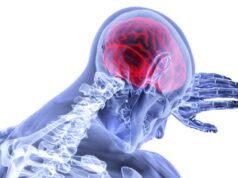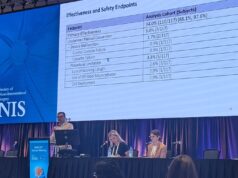A presentation on electrosonic stimulation as adjunctive therapy to dopaminergic treatments at the 5th International Symposium on Neuromodulation says that patients undergoing stimulation with the ESStim technology (Highland Instruments) saw significant improvements relative to baseline measurements when compared to sham stimulation in Parkinson’s disease patients.
The study entitled “Electrosonic stimulation as adjunctive therapy to dopaminergic treatments in Parkinson’s Disease”, discussed the ESStim technology and was presented at the 5th International Symposium on Neuromodulation, held earlier this year (16–18 September) at Mackenzie Presbyterian University, Sao Paulo, Brazil. The research was conducted at the Spaulding Rehabilitation Hospital’s Laboratory of Neuromodulation (Boston, USA).
Felipe Fregni, director of the Laboratory of Neuromodulation at Spaulding Rehabilitation Hospital and associate professor of Physical Medicine and Rehabilitation and Neurology at Harvard Medical School was lead clinical investigator for the study. The clinical data that was presented was conducted under part of a multi-year SBIR grant from the National Institutes of Health National Institute of Neurological Disorders and Stroke (NIH-NINDS) for the clinical evaluation of Highland’s ESStim technology for the treatment of Parkinson’s disease.
“Our preliminary analysis in a series of patients with Parkinson’s disease undergoing ESStim treatment demonstrated statistically significant improvement in key clinical measurements employed to manage Parkinson’s patients”, says Fregni. “Specifically, 20 Parkinson’s disease patients were recruited (10 active, 10 sham). Safety and motor assessments were completed for patients following ESStim treatment given 20 minutes/day for 10 days (five days/week). Tests were completed at the conclusion of each stimulation visit and one, two, four, and six weeks post stimulation with patients in their ‘on’ state; that is, we assessed patients while they were under the effects of their current therapies. This is important because we assessed the effects of stimulation beyond what conventional drug therapies provide.”
He continues: “Our results showed that patients undergoing ESStim treatment experienced significant improvements relative to baseline measurements when compared to sham stimulation for the following clinical measurements: Walking times improved (p<0.01), Unified Parkinson’s Disease Rating Scale (UPDRS) improved (p=0.058), UPDRS part III related to bradykinesia and rigidity improved (p<0.05), bradykinesia test times improved (p<0.01). We also demonstrated that significant effects lasted up to four weeks post stimulation. Furthermore, safety data monitored following ESStim treatment demonstrated no neurocognitive decline, no seizure activity on EEG, and no new neurological signs or symptoms.”
“ESStim has shown preliminary positive results for Parkinson’s disease patients. We are pleased that our Laboratory of Neuromodulation at Spaulding Rehabilitation Hospital is a critical component of this investigation. We will be shortly reporting additional clinical results from our investigation into ESStim for other clinical indications”, Fregni concludes.
Ciro Ramos Estebanez, neurologist and assistant professor of Neurology at Case Western Reserve University, Cleveland, USA, who did not participate in the phase I trial, independently evaluated the results and states, “These results are particularly encouraging as the non-invasive ESStim therapy was provided and assessed while patients were receiving their standard therapies. Thus, the data suggests ESStim can elicit safe effective motor improvements in Parkinson’s patients beyond what their current therapies are providing.”
Timothy Wagner, chief scientific officer and founder for Highland comments: “Following years of extensive pre-clinical development, I am excited to see the benefits of ESStim being brought into the clinical environment. I am looking forward to assisting in bringing relief to the millions of Parkinson’s patients who are not managed by current therapies.” Wagner continues, “We firmly believe that ESStim overcomes limitations of other reported non-invasive brain stimulation technologies through our advances in tissue targeting, stimulation depth obtained, and sustained therapeutic effect.”









